| TRAINEE LOGIN | | | EMPLOYER / BILLING LOGIN | | | CONTACT US |

6 Steps to Develop a WHMIS Program
WHMIS Inspections, Records, Training and more!

According to Federal WHMIS regulations, when you have hazardous chemicals in your workplace you are required to have a WHMIS Program in place, and you're required to review this program annually with employees. In addition, Provincial OHS regulations identify specific duties of the employer.
A WHMIS Program answers important questions about WHMIS asked by many employers including:
- I'm not sure what WHMIS products we have?
- How can we tell what hazards there are in our workplace?
- If we do this one time is it enough?
- How do I decide who needs training and do they need to take it every year?
- Are there any ongoing requirements besides WHMIS hazard inspections?
- Is there anything to keep track of besides the list of hazardous products inventory?
Almost every workplace has some types of chemicals classified as hazardous under WHMIS, and many workers are at offsite locations where they have to be prepared and knowledgeable about chemicals which may be at these sites.
A WHMIS Program is developed by the Employer in consultation with the employee safety representative or joint health and safety committee. The intention of the program is to ensure information about hazardous products is communicated effectively with all employees.
The checklist below explains the six requirements of a WHMIS program. And if you are not sure what chemicals you have, the first step takes care of that.
- A Hazardous Product Listing or Inventory
The starting point is a product listing or inventory that identifies each hazardous product, the quantity on hand and the location. This is very important in the event of a fire or emergency situation and first responders need to know what hazardous products are inside a building, where are the located and what approximate quantity is on hand.
- Hazard Identification
The hazard(s) of each product must be identified as a product is brought into the workplace in order to make decisions about the storage, handling, safe use and disposal as well as emergency response plans.
- Regular Workplace Inspections
Inspections are required to ensure all hazardous products are properly labelled and the container or packaging is in good condition, and the Safety Data Sheet for each product is available to all workers (on paper or electronically they must be readily available).
- Education, Training and Testing
Employers are responsible for making sure all workers who work with hazardous products or may be exposed to hazardous products are knowledgeable on the hazards of these products. This level of knowledge includes an understanding of what the WHMIS system is, the classification of products into hazard classes, how to read a supplier or workplace label, and how to read a Safety Data Sheet.
This type of education or training is often provided through a generic level or WHMIS Awareness or WHMIS 2015 training and can be done in person or online. This forms the basis for more product and workplace specific training on the safe usage, handling, storage, disposal, precautions, and what to do in the event of a situation such as an exposure, spill or emergency situation. This level of training is also referred to as "hands on" and is often provided by a supervisor, manager or person trained in the safe work procedures for that product. This level of training can also be done online with product and site-specific training materials.
This section of your WHMIS program includes your requirements for how frequently your employees must be evaluated, trained, tested and what form of training is required.
- Review, Evaluate and Revise
Each of the steps in the program must be reviewed at least once a year. In addition to reviewing the product inventory and workplace inspection process, a review with workers must be conducted to ensure workers are aware of any changes in the program. The annual review with each worker allows the Employer to assess the workers knowledge level, typically through testing, to allow a decision on when retraining or a WHMIS refresher is required for each worker. It is the employer's responsibility or due diligence to ensure that each employee is knowledgeable, has the awareness of the hazards, and has the understanding of the safe work procedures to protect their safety in the workplace.
- WHMIS Record Keeping
Records should be kept of hazardous product inventories, workplace inspections, safe work procedures, employee training records, and annual WHMIS reviews. This documentation is an essential part of the WHMIS program and helps to demonstrate the decisions and actions taken to ensure an effective WHMIS program is in place.
If you have any questions about setting up your WHMIS Program or conducting an Annual WHMIS review contact the Service and Support team. For more information on specific duties of an Employer under WHMIS visit the page on the Ontario government site for Employer Duties.








